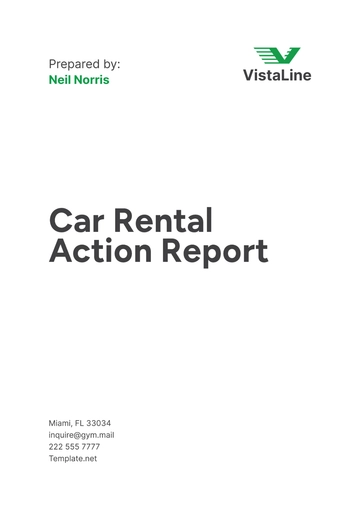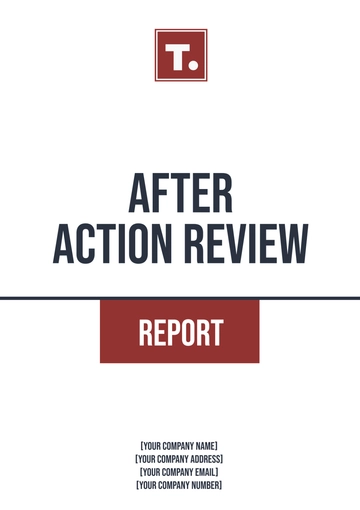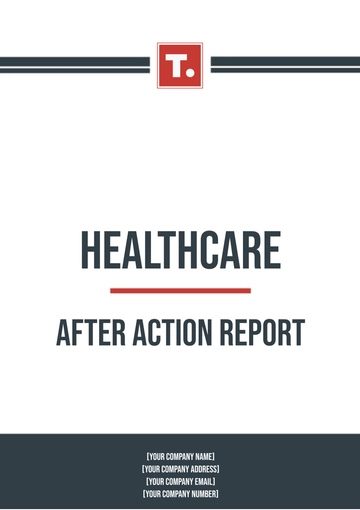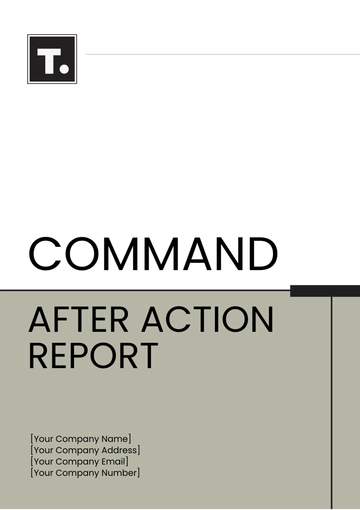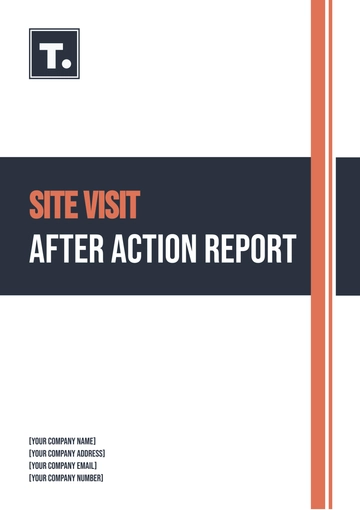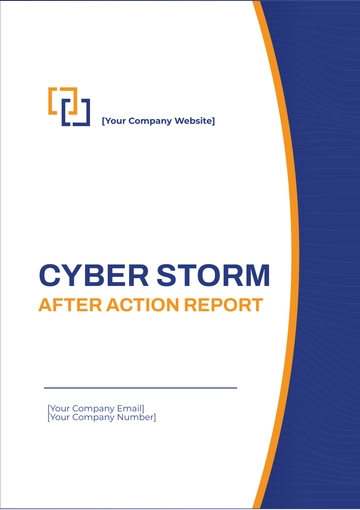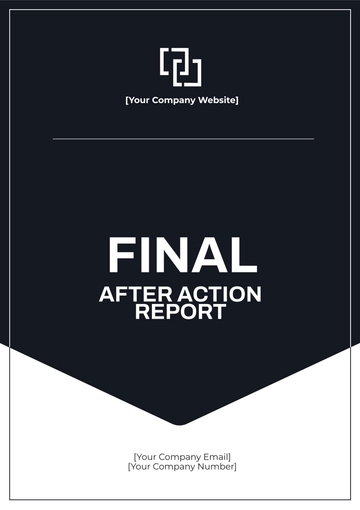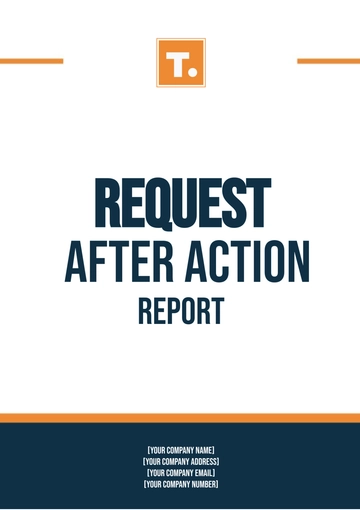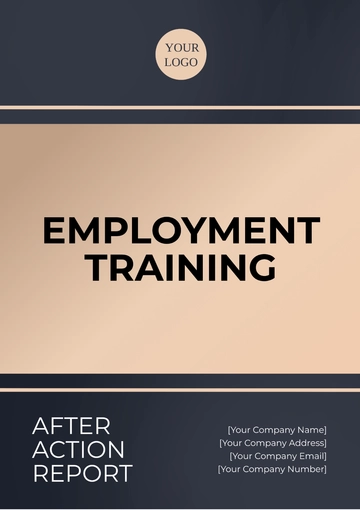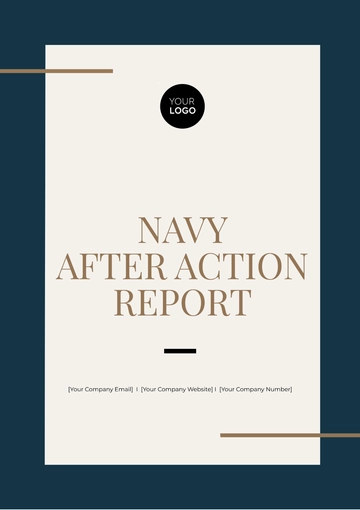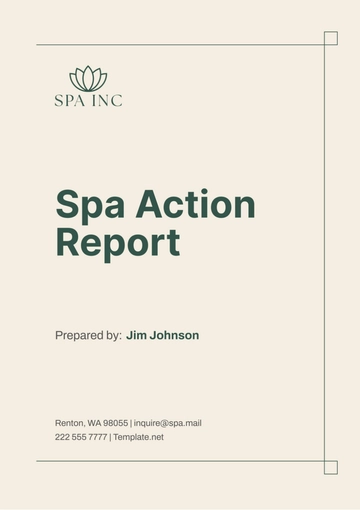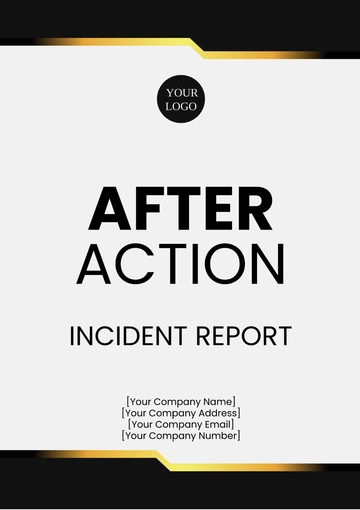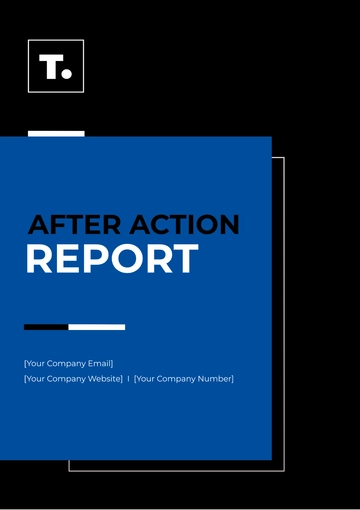Free Restaurant Action Report

I. Introduction
A. Purpose
The purpose of this Restaurant Action Report is to conduct a comprehensive assessment of the operational performance of [Your Company Name] restaurant during the specified reporting period. By analyzing various facets of the restaurant's activities, including financial metrics, customer feedback, staffing dynamics, sales and marketing strategies, operational hurdles, and proposed solutions, this report aims to provide actionable insights that can drive informed decision-making and facilitate continuous improvement initiatives.
B. Scope
This report encompasses the period from January 1st, 2050, to March 31st, 2050. It delves into the intricacies of the restaurant's operations, spanning from front-of-house to back-of-house activities, across all departments and functional areas. By examining key performance indicators and operational data, this report seeks to offer a comprehensive overview of the restaurant's performance landscape, identifying areas of excellence and opportunities for enhancement.
C. Audience
The primary audience for this report includes [Your Company Name] management, comprising the restaurant owner, general manager, department heads, and other key stakeholders involved in strategic decision-making and operational oversight. Additionally, this report may also be of interest to investors, industry analysts, and external consultants seeking insights into the restaurant's operational dynamics and performance trajectory.
II. Executive Summary
A. Key Highlights
Metrics Performance Total revenue generated [$350,000] Average customer satisfaction rating [85%] Key operational challenges and successes
Challenges:
Shortage of Key Ingredients: During the reporting period, the restaurant faced challenges due to a shortage of certain key ingredients essential for popular menu items. This led to occasional unavailability of menu items, resulting in customer dissatisfaction and potential revenue loss.
Staffing Issues: The restaurant experienced staffing shortages, particularly during peak hours, which impacted service quality and operational efficiency. This resulted in longer wait times for customers and increased pressure on existing staff.
Successes:
Increased Customer Retention Rate: Despite challenges, the restaurant successfully retained a significant portion of its customer base. This was attributed to personalized customer service, loyalty programs, and consistent quality of food and service.
Positive Feedback on Menu Additions: Recent additions to the menu received positive feedback from customers, contributing to increased sales and customer satisfaction.
B. Recommendations
Implementing a Proactive Inventory Management System: To address the challenge of ingredient shortages, the restaurant should invest in a proactive inventory management system. This system will enable better forecasting of ingredient needs, timely replenishment of stock, and proactive communication with suppliers to prevent shortages.
Conducting Additional Staff Training:
Conflict Resolution: Staff should receive training in conflict resolution techniques to effectively handle challenging situations, such as customer complaints or disagreements among team members. This will help maintain a positive atmosphere in the restaurant and enhance customer satisfaction.
Time Management: Training programs focused on time management can help staff optimize their workflow during busy periods, minimizing wait times and improving overall service efficiency. Techniques such as prioritization, multitasking, and effective communication can be emphasized to ensure smooth operations during peak hours.
III. Operational Overview
A. Financial Performance
Total Revenue Generated
During the reporting period from January 1st, 2050, to March 31st, 2050, [Your Company Name] restaurant generated a total revenue of [$550,000]. This figure represents the sum of income derived from food and beverage sales, catering services, and other revenue streams.
Cost Analysis
The cost of goods sold (COGS) for the same period amounted to [$250,000]. This includes expenses related to purchasing raw materials, ingredients, and supplies necessary for food preparation and beverage service. Additionally, operational expenses such as labor costs, rent, utilities, and marketing expenses totaled [$150,000].
Profit Margin
Calculating the gross profit margin reveals that [Your Company Name] restaurant achieved a gross profit margin of [54%] during the reporting period. This indicates the efficiency with which the restaurant is generating revenue after accounting for the cost of goods sold.
B. Customer Feedback
Satisfaction Ratings
Based on customer feedback surveys conducted during the reporting period, [Your Company Name] restaurant attained an average customer satisfaction rating of [87%]. This rating reflects the overall level of satisfaction among patrons regarding the quality of food, service, ambiance, and overall dining experience.
Key Insights
Customer feedback highlighted several key areas of strength and improvement for the restaurant. Positive comments were received regarding the friendly and attentive service provided by staff, the freshness and flavor of menu items, and the cleanliness and atmosphere of the dining environment. However, some customers expressed concerns regarding occasional delays in service during peak hours and inconsistencies in food presentation.
C. Staffing
Employee Metrics
[Your Company Name] restaurant employed a total of [30] staff members during the reporting period, including chefs, servers, bartenders, kitchen assistants, and managerial staff. The distribution of staff across different roles and departments ensured smooth operations and efficient service delivery.
Staff Turnover
The staff turnover rate for the same period was [15%]. This turnover rate indicates the percentage of employees who left the company during the reporting period and need to be replaced.
IV. Sales and Marketing Analysis
A. Sales Performance
Breakdown of Sales by Category
Category
Sales Revenue
Food
[$400,000]
Beverages
[$120,000]
Catering
[$30,000]
Others
[$10,000]
The breakdown of sales by category illustrates the revenue distribution within [Your Company Name] restaurant. Food sales accounted for the majority of revenue, representing [$400,000], which indicates a strong demand for the restaurant's menu offerings. Beverages contributed [$120,000] to the total revenue, reflecting both alcoholic and non-alcoholic beverage sales. Catering services generated [$30,000] in revenue, indicating a supplementary income stream from events and off-site catering orders. Revenue from other sources, including merchandise sales or rental fees for private events, totaled [$10,000].
Comparison of Sales Performance
Comparing sales performance to previous periods reveals a [10%] increase in total revenue compared to the same quarter last year. This growth can be attributed to several factors:
Effective Marketing Strategies: Targeted marketing campaigns and promotions effectively attracted new customers and encouraged repeat business.
Menu Innovations: Introduction of new menu items or seasonal specials appealed to customers' preferences and encouraged additional spending.
Enhanced Customer Experience: Investments in staff training and service improvements resulted in higher customer satisfaction and increased loyalty.
Economic Factors: Favorable economic conditions or shifts in consumer spending patterns may have contributed to increased sales.
B. Marketing Initiatives
Overview of Recent Marketing Campaigns
[Your Company Name] restaurant implemented various marketing initiatives during the reporting period to enhance brand visibility and drive sales. These initiatives included:
Social Media Promotions: Engaging content, including visually appealing images and videos, were shared on social media platforms such as Instagram, Facebook, and Twitter. Special promotions, discounts, and contests were used to incentivize customer engagement and increase followership.
Email Marketing Campaigns: Targeted email campaigns were deployed to communicate exclusive offers, discounts, and upcoming events to subscribers. Personalized messages tailored to customer preferences helped nurture customer relationships and drive repeat visits.
Collaborations and Partnerships: Collaborations with local businesses, influencers, or community organizations were leveraged to reach new audiences and tap into existing networks. Cross-promotional activities, such as co-hosted events or joint marketing campaigns, helped expand the restaurant's reach and attract new customers.
Analysis of Campaign Effectiveness
The effectiveness of marketing campaigns was measured through various key performance indicators (KPIs) and analytics, including:
Website Traffic: Monitoring website traffic and user behavior provided insights into the effectiveness of online marketing efforts and the conversion rate of website visitors into customers.
Social Media Engagement: Tracking metrics such as likes, shares, comments, and follower growth helped gauge the level of audience engagement and the impact of social media campaigns on brand awareness and customer interaction.
Redemption Rates: Analyzing the redemption rates of promotional offers, coupons, or discounts provided valuable feedback on the effectiveness of specific marketing initiatives in driving sales and increasing customer engagement.
Customer Feedback: Soliciting feedback from customers through surveys, reviews, or direct communication channels helped assess customer satisfaction levels and identify areas for improvement in marketing strategies and messaging.
V. Operational Challenges and Solutions
A. Challenges Faced
Shortage of Key Ingredients
During the reporting period, [Your Company Name] restaurant encountered challenges related to the availability of certain key ingredients essential for menu items. This shortage disrupted the restaurant's ability to offer certain dishes, leading to customer dissatisfaction and potential revenue loss.
Staffing Issues During Peak Hours
The restaurant experienced staffing shortages, particularly during peak dining hours. This resulted in increased pressure on existing staff, longer wait times for customers, and potential service quality issues.
B. Solutions Implemented
Proactive Inventory Management
To address the challenge of ingredient shortages, the restaurant implemented a proactive inventory management system. This system includes:
Regular monitoring of ingredient levels to anticipate shortages.
Establishing relationships with multiple suppliers to ensure a consistent supply chain.
Exploring alternative ingredients or menu substitutions to mitigate the impact of shortages.
Staffing Optimization
To alleviate staffing issues during peak hours, [Your Company Name] restaurant implemented the following solutions:
Revised Scheduling Practices: Adjusting employee schedules to align with peak dining times and ensuring adequate coverage during periods of high demand.
Cross-Training: Training staff members across multiple roles to enhance flexibility and adaptability during staffing shortages.
Incentive Programs: Implementing incentive programs or bonuses to encourage staff availability during peak hours and improve employee retention.
VI. Action Plan
A. Short-Term Goals
Increase Sales Efficiency
Objective: Improve sales efficiency by [60%] within the next [3 months].
Strategies:
Streamline order processing and kitchen operations to reduce wait times.
Implement upselling techniques to increase average order value.
Offer promotions or discounts during off-peak hours to drive traffic during slower periods.
Enhance Staff Training and Development
Objective: Enhance staff skills and performance through targeted training initiatives.
Strategies:
Conduct regular training sessions on customer service, menu knowledge, and sales techniques.
Provide opportunities for professional development and career advancement.
Implement a mentorship program to foster collaboration and skill-sharing among staff members.
B. Long-Term Goals
Improve Operational Efficiency
Objective: Enhance overall operational efficiency to reduce costs and maximize profitability.
Strategies:
Invest in technology solutions to automate manual processes and streamline operations.
Conduct regular performance evaluations and operational audits to identify areas for improvement.
Implement sustainability initiatives to reduce waste and minimize environmental impact.
Expand Market Reach
Objective: Expand [Your Company Name] restaurant's market reach and attract new customer segments.
Strategies:
Develop targeted marketing campaigns to reach specific demographic groups or geographic areas.
Explore partnerships with local businesses, event organizers, or online platforms to increase visibility.
Diversify menu offerings to appeal to a broader range of tastes and dietary preferences.
VII. Conclusion
A. Summary of Key Findings
During the reporting period from January 1st, 2050, to March 31st, 2050, [Your Company Name] restaurant faced significant challenges, including ingredient shortages and staffing issues during peak hours. Despite these challenges, the restaurant managed to maintain a satisfactory level of customer satisfaction and achieved a gross profit margin of [54%]. Key findings from the report include:
Identification of challenges: The report highlighted the shortage of key ingredients as a major operational challenge, impacting menu offerings and customer satisfaction. Additionally, staffing issues during peak hours were identified as a key area requiring improvement.
Implementation of solutions: The restaurant implemented proactive measures to address operational challenges, including proactive inventory management and staffing optimization strategies.
Performance evaluation: Despite the challenges faced, the restaurant demonstrated resilience and adaptability in maintaining operational efficiency and customer satisfaction levels.
B. Future Outlook
Looking ahead, [Your Company Name] restaurant remains committed to continuous improvement and growth. The restaurant aims to:
Further optimize operations: By refining inventory management processes, enhancing staff training programs, and leveraging technology solutions to improve efficiency and productivity.
Expand market reach: By exploring new market segments, strengthening partnerships with local businesses and organizations, and diversifying menu offerings to cater to evolving customer preferences.
Enhance customer experience: By prioritizing customer feedback, implementing service enhancements, and delivering consistent quality in food and service.
C. Closing Remarks
[Your Company Name] restaurant acknowledges the challenges faced during the reporting period and expresses gratitude to its dedicated staff, loyal customers, and stakeholders for their support. The restaurant remains committed to delivering exceptional dining experiences, driving innovation, and fostering sustainable growth in the future.
- 100% Customizable, free editor
- Access 1 Million+ Templates, photo’s & graphics
- Download or share as a template
- Click and replace photos, graphics, text, backgrounds
- Resize, crop, AI write & more
- Access advanced editor
Drive improvement initiatives with Template.net's Restaurant Action Report Template. This customizable document provides a structured format for documenting action plans, progress, and outcomes of improvement projects in your restaurant operations. Track action items, timelines, responsible parties, and results achieved. Enhance accountability and transparency in operational excellence efforts. Editable in our Ai Editor Tool for seamless customization to match your action reporting needs and project requirements.
You may also like
- Sales Report
- Daily Report
- Project Report
- Business Report
- Weekly Report
- Incident Report
- Annual Report
- Report Layout
- Report Design
- Progress Report
- Marketing Report
- Company Report
- Monthly Report
- Audit Report
- Status Report
- School Report
- Reports Hr
- Management Report
- Project Status Report
- Handover Report
- Health And Safety Report
- Restaurant Report
- Construction Report
- Research Report
- Evaluation Report
- Investigation Report
- Employee Report
- Advertising Report
- Weekly Status Report
- Project Management Report
- Finance Report
- Service Report
- Technical Report
- Meeting Report
- Quarterly Report
- Inspection Report
- Medical Report
- Test Report
- Summary Report
- Inventory Report
- Valuation Report
- Operations Report
- Payroll Report
- Training Report
- Job Report
- Case Report
- Performance Report
- Board Report
- Internal Audit Report
- Student Report
- Monthly Management Report
- Small Business Report
- Accident Report
- Call Center Report
- Activity Report
- IT and Software Report
- Internship Report
- Visit Report
- Product Report
- Book Report
- Property Report
- Recruitment Report
- University Report
- Event Report
- SEO Report
- Conference Report
- Narrative Report
- Nursing Home Report
- Preschool Report
- Call Report
- Customer Report
- Employee Incident Report
- Accomplishment Report
- Social Media Report
- Work From Home Report
- Security Report
- Damage Report
- Quality Report
- Internal Report
- Nurse Report
- Real Estate Report
- Hotel Report
- Equipment Report
- Credit Report
- Field Report
- Non Profit Report
- Maintenance Report
- News Report
- Survey Report
- Executive Report
- Law Firm Report
- Advertising Agency Report
- Interior Design Report
- Travel Agency Report
- Stock Report
- Salon Report
- Bug Report
- Workplace Report
- Action Report
- Investor Report
- Cleaning Services Report
- Consulting Report
- Freelancer Report
- Site Visit Report
- Trip Report
- Classroom Observation Report
- Vehicle Report
- Final Report
- Software Report

